SACRED CLOTH, SILENT STORIES: THE LEGACY OF THE PLAGENS FAMILY
by Anna Muller and Iwona Flis
The Orchard Lake campus is home to the Polish Institute of Culture and Research, a treasure trove of historical and cultural artifacts. Its extensive collections include archival documents from institutions, Polish organizations, parishes, and private individuals. Spanning two floors, the collection is rich not only in documents but also in an extraordinary array of objects, including art, weapons, wooden artifacts, and more. From saintly figures to folk art, portraits, and works by amateur artists, the archive is brimming with hidden gems.
Among these treasures are a wedding cap, fragments of a veil adorned with flowers, and a baptismal dress and shoes once belonging to Józef Kazimierz Plagens and his mother, Konstancja Plagens (née Grygier). Józef Kazimierz Plagens is a well-known figure in the Polish American community in metro Detroit. He served as the pastor of Sweetest Heart of Mary and St. Florian parishes. His family immigrated to the United States in 1885, settling in Detroit, Michigan, where Józef graduated from the University of Detroit before pursuing theological studies in Baltimore. He earned a bachelor’s degree in theology in 1903 and was ordained a priest that same year by Bishop Samuel J. Foley, Ordinary of Detroit.
Initially serving as a curate at Sacred Heart of Mary Parish in Detroit, Józef later became a pastor in Port Austin and Hamtramck. In 1924, he was named Auxiliary Bishop of Detroit, becoming Michigan’s first Polish bishop. On November 16, 1935, he was appointed Bishop of Sault Sainte Marie-Marquette and, five years later, became the Ordinary of Grand Rapids. He oversaw the construction of Saint Peter Cathedral in Marquette, particularly the large east and west windows commemorating the Kingship of Christ and the Queenship of Mary.
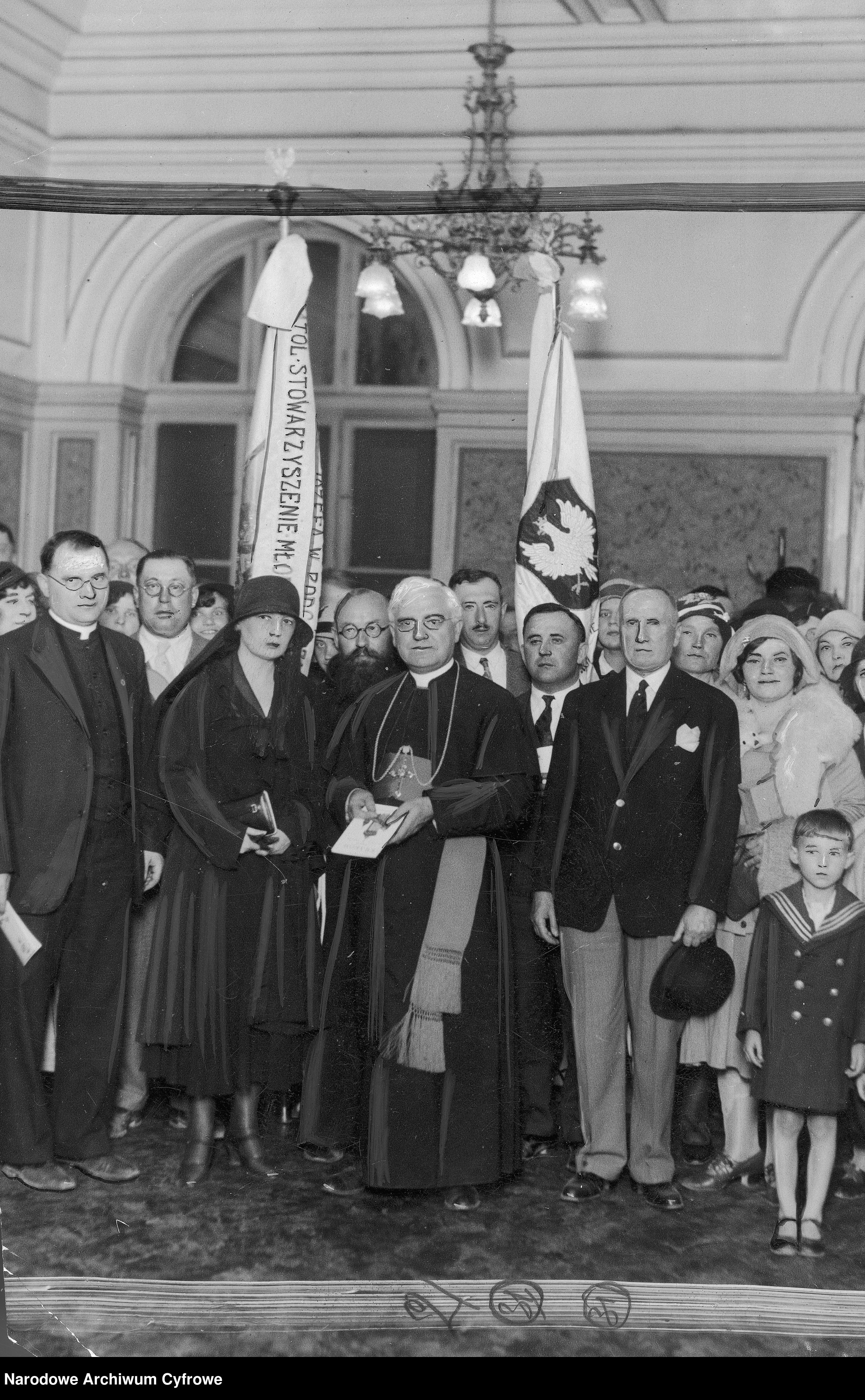
Bishop Józef Plagens with Polish Americans during a trip to Poland (1930).
At least once during his lifetime, Józef Plagens visited Poland. In 1930, he arrived in Gdynia onboard the passenger-cargo ship Warszawa with a group of 230 Polish Americans from the Polish Roman Catholic Union in America. During their visit, they traveled to Gdynia, Gdańsk, and Warsaw, where Bishop Plagens met with President Mościcki, before proceeding to Poznań to attend the Eucharistic Congress. Plagens passed away at the age of 63 in a hospital in Grand Rapids. Initially buried in that city, his remains were later transferred to Resurrection Cemetery in Wyoming. The carefully preserved artifacts associated with him were likely donated after his death in 1943.
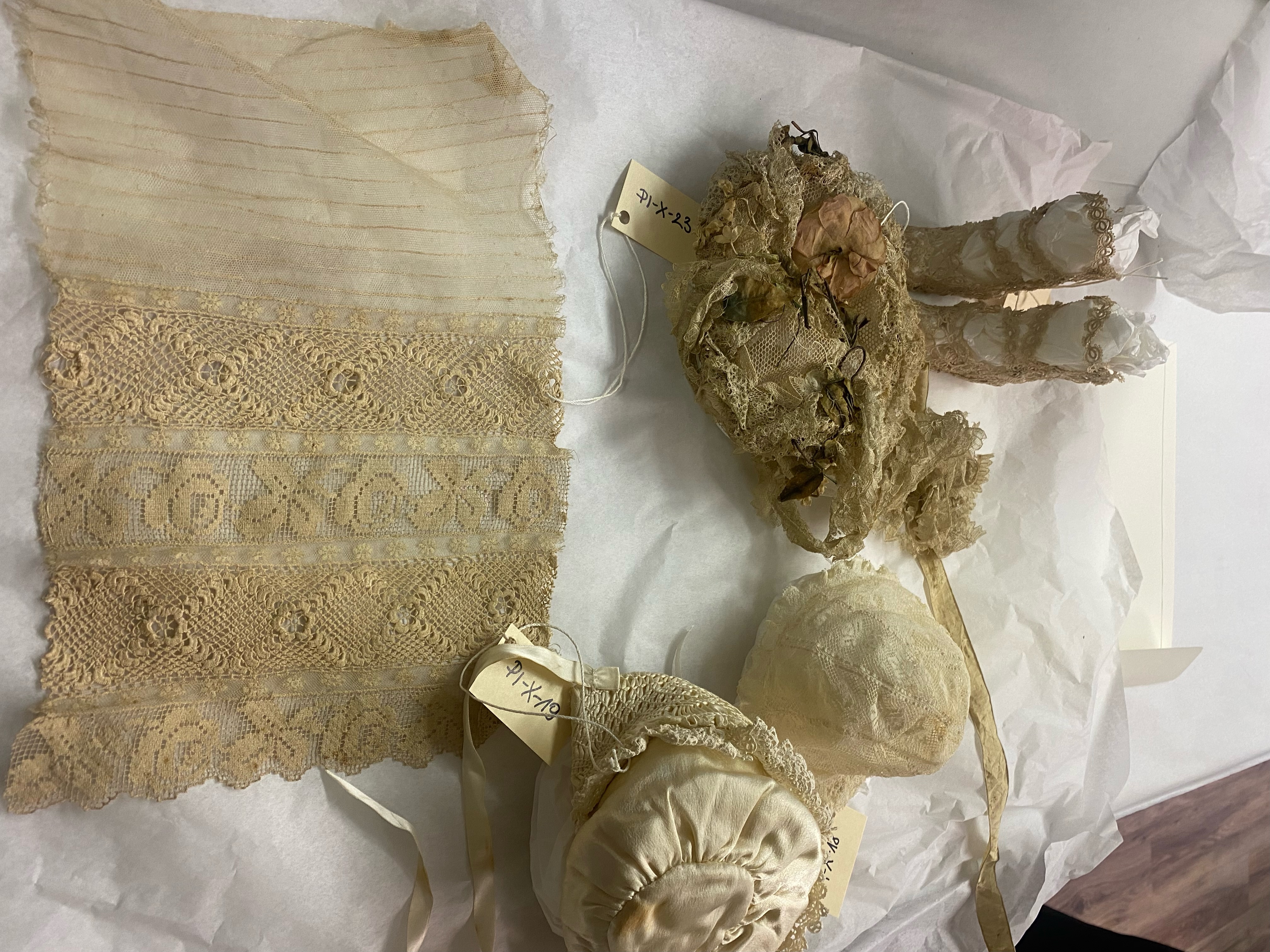
While Józef’s years of service as a pastor and bishop are well-documented, his baptismal dress and his mother’s wedding cap hint at a more personal story that remains largely obscure. We know that Józef was born in Czeszewo (Poviat Wągrowiec) near Poznań on January 29, 1880, to Andrzej (1850–1922) and Konstancja Elżbieta, née Grygier (1853–1928), five years after their wedding, which took place in Czeszewo on September 21, 1875.
Konstancja, the owner of the wedding cap, was born in 1853 into the family of a furrier, Antoni Grygier, and his wife Maria (Maryanna), née Buszkiewicz. She had at least three siblings. She married at the age of 22, while her husband, Andrzej, was 26. They most likely lived in or near Czeszewo at least until 1883, as their children’s birth and baptismal certificates from 1876 to 1883 were all issued in this parish.
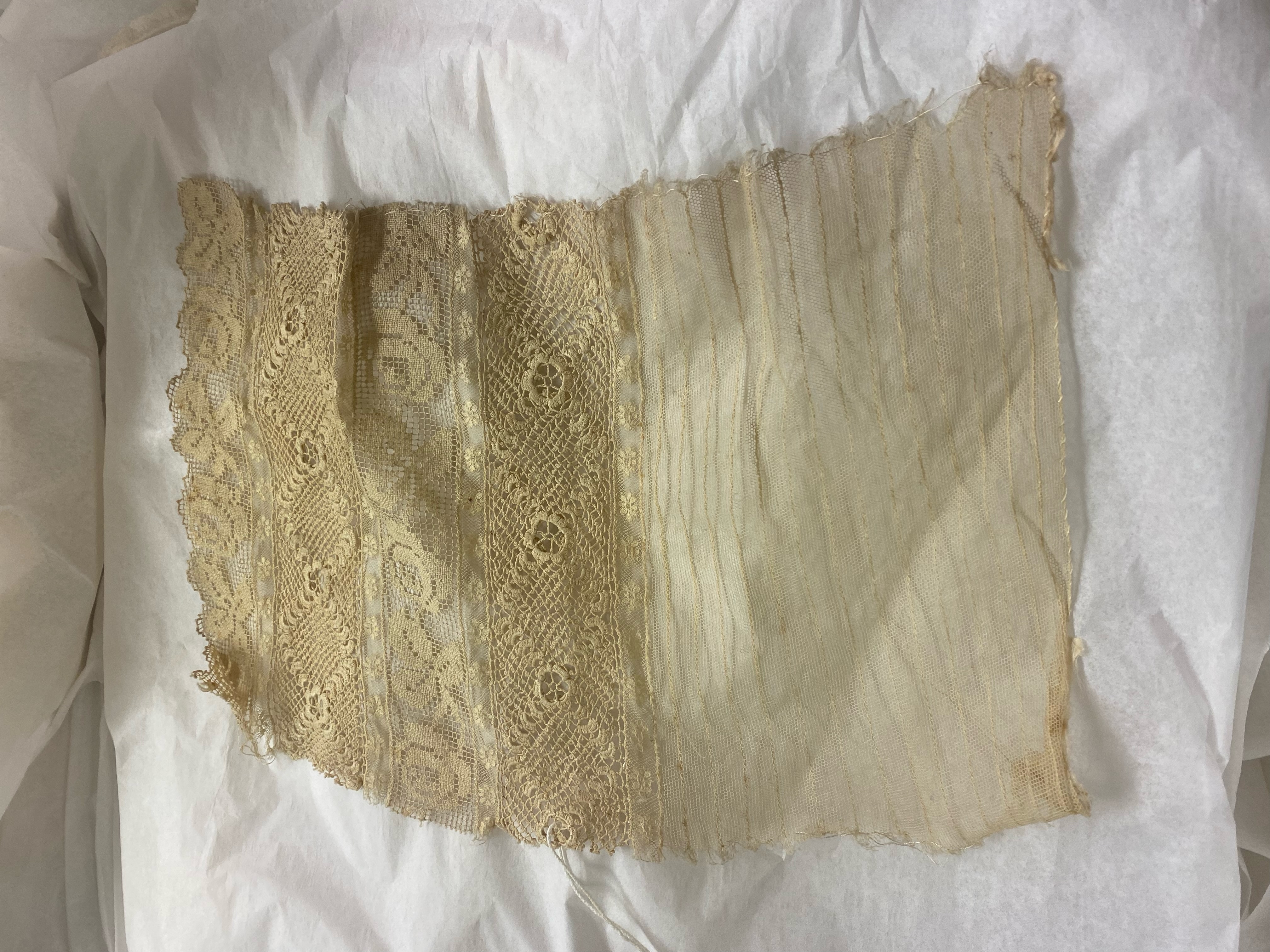
Konstancja and Andrzej had seven children, but only three— all sons—survived into adulthood. The young couple endured the heartbreaking loss of their first two daughters: Marjanna, who died at five months old, and Ciglia, who was likely just a few weeks old when she passed away. Grieving the deaths of their children, the Plagens must have feared for the fate of their next offspring. Józef was their third child and the first to survive. He was baptized just over a week after his birth, on February 8, 1880, in Czeszewo. His baptismal records reveal that his godfather was Martin Plagens, and his godmother was Stanisława Grygier. The beautiful artifacts depicted here come from this ceremony.
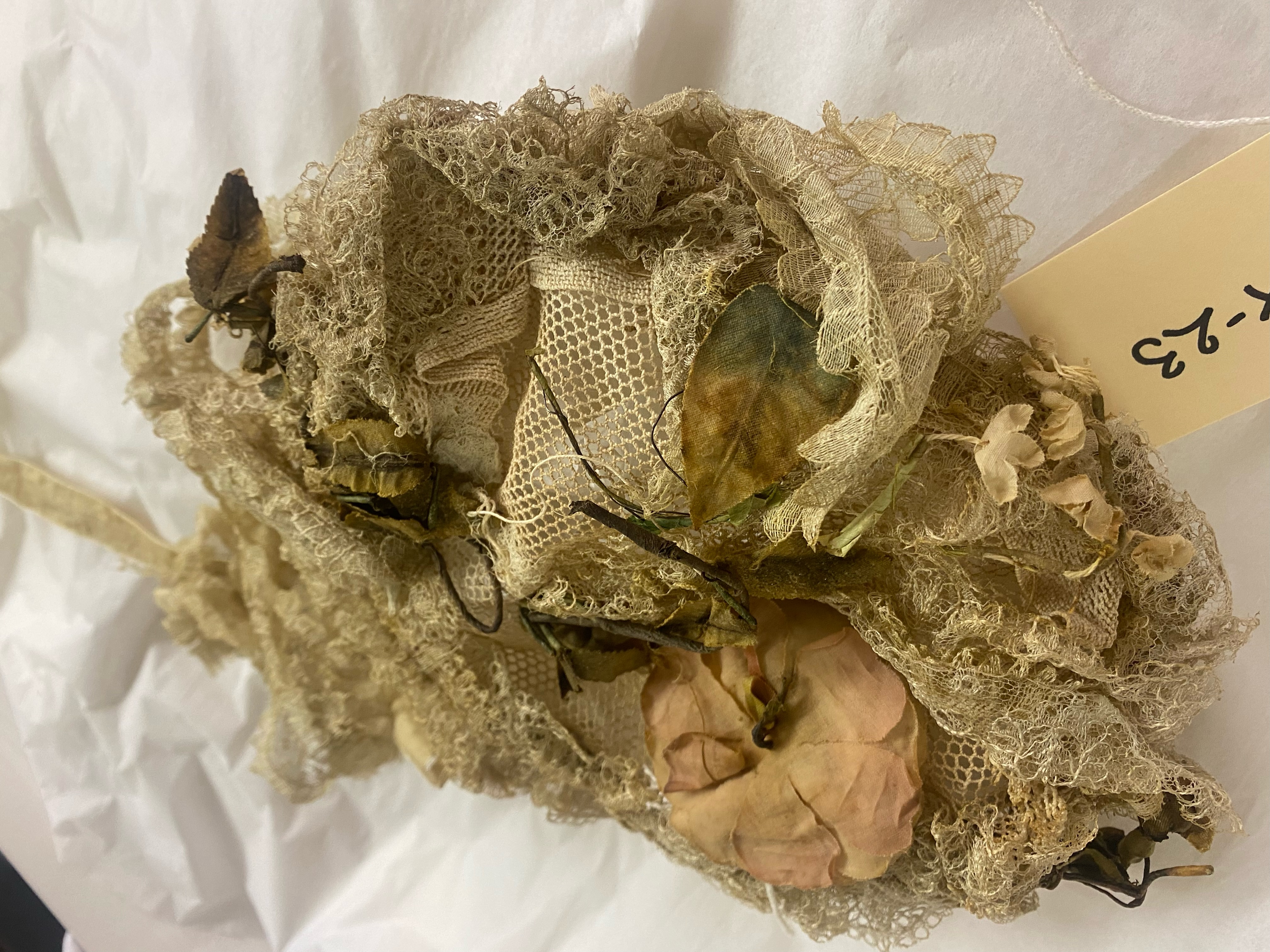
The Plagens had two more children who died soon after birth. Their last child born in Poland was Kazimierz, who entered the world on February 12, 1885. That same year, the Plagens immigrated to the United States. Józef, the future bishop, was five years old, and Kazimierz was just an infant, making the journey a significant challenge for the family.
Ten years after their wedding and five years after Józef’s christening, the Plagens still carried with them Konstancja’s wedding cap and veil, as well as Józef’s baptismal dress and shoes. These objects must have been precious to them—perhaps as family heirlooms, but possibly also preserved for future children, as Konstancja was still relatively young (around 32) when they arrived in the U.S. Indeed, they did have one more son, Ladislaus, who was born in Detroit on June 27, 1888.
Kazimierz (Casimir) worked as a salesman in the piano industry and passed away in Toledo, Ohio, in 1969. Ladislaus became a bank teller and died in Port Huron, Michigan, in 1982. Both were survived by their children.
From the U.S. censuses in 1900 and 1910 we know that the Grygier family immigrated to the U.S. as well. Konstancja’s father, Antoni, arrived in 1860, but it is not clear, whether her mother, Maria, came to America in 1860 or in 1885, as various documents mention both these dates. Their two sons, Konstancja’s younger brothers, also immigrated to the U.S. around 1881. If Mary Grygier immigrated in 1885, she probably came with the Plagens. Their exact tracks remain a mystery, but the family must have experienced periods of separation and longing. Their family ties endured, however, and both families, the Grygiers and the Plagens, stayed close to each other in Michigan, so in her later years Konstancja had many relatives around her. According to the 1900 and 1910 censuses, she did not speak English. Andrzej Plagens, Konstancja’s husband, worked as an agent in an insurance company. He passed away in 1922, and for the last six years of her life she went to live with her son, Bishop Józef Plagens, in the Sweetest Heart of Mary rectory, where she passed away in 1928. She is buried at Mt. Olivet Cemetery in Detroit.
The only photo of Konstancja we managed to find was published in the Detroit Free Press on December 11, 1928, after her death.
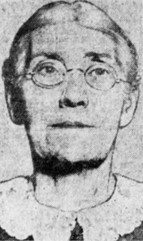
Source: findagrave.com/memorial/124618860/karstanzya-e-plagens
In an effort to learn more about the family and the beautiful textiles that are part of this collection, we contacted Marianna Czerwińska from the Textile Department at the National Museum in Poznań. She speculated that, since "Plagens" is not a typically Polish surname, the family might have belonged to the Bambers—Poles of German origin who descended from settlers brought to the Poznań region between 1719 and 1753. These settlers were invited to repopulate villages abandoned during the Great Northern War and a subsequent cholera epidemic. However, no concrete evidence has been found to support this theory. The surname is indeed extremely rare, and according to official data in 2025 there are only 23 Plagens in Poland, all in Wielkopolska, the majority of them in Wągrowiec Poviat.
While the Polish years of the Plagens family remain mysterious, the baptismal dress and fragments of the wedding cap are remarkably well-preserved. According to Czerwińska, baptismal clothes, caps, and lace from the 19th and early 20th centuries were typical for both boys and girls. The tatting lace shoes, however, are exceptionally rare and beautifully crafted. While researching, I discovered that many 19th-century children’s gowns were made intentionally long, as if for older children. This practice was believed to “trick” fate, giving the child symbolic room to grow and thus aiding their survival in an era when infant mortality was tragically common. Interestingly, many boys’ gowns were pink, while girls’ were blue. Blue symbolized the Virgin Mary, while pink, a shade of red, was associated with Jesus Christ.
Despite the uncertainties surrounding their early years, the artifacts of Józef Kazimierz Plagens and his family serve as tangible links to a rich yet elusive past. These objects are more than relics; they are silent storytellers, inviting us to delve deeper into the lives they once adorned. As we explore these remnants of history, we are reminded of the enduring legacy of the Polish community in America and the intricate tapestry of their heritage, which continues to be woven through generations.
.
Sources:
Dawna Moda Dziecięca, ed. Małgorzata Moźdzyńska Nawotko (Wrocław: Muzeum Narodowe we Wrocławu, 2013).
https://www.familysearch.org
https://poznan-project.psnc.pl
https://stpercathedral.org/about/history/bishops/
https://www.szukajwarchiwach.gov.pl/
Kurjer Poznański, No. 255, $ June 1930: https://www.wbc.poznan.pl/Content/41776/25474.pdf